Q&A: In 'The American Revolution,' Ken Burns' filmmakers go back to the beginning
Published in Entertainment News
ANAHEIM, Calif. — When the new Ken Burns documentary series “The American Revolution” premieres on PBS on Sunday, Nov. 16, it will mark the end of a filmmaking journey that began almost a decade ago.
“Ken always says these films take 10 years,” says Sarah Botstein, who co-directed the series with David Schmidt and Burns. “From the second he goes, ‘We’re going to make “The American Revolution”‘ to when it broadcasts is 10 years.”
That’s two years longer than the actual length of the American Revolution, but the Founding Fathers and the Continental Army were making history in real time, while Burns and his Florentine Films team were reading and researching nearly 250 years later.
“I’ve worked on a few of these big epic series,” says Botstein, who joined Burns’ filmmaking world in 1997. “Our process stays the same with any topic.
“The specific things that have to do with the 18th century and the American Revolution are different from jazz music or World War II or Vietnam,” she says of past docuseries from Burns and his collaborators. “But we start by immersing ourselves in the topic.
“We read a lot. We meet a lot of people. We meet scholars. We’re fundraising. Geoff Ward [who writes screenplays for Burns’ series] starts to familiarize himself with the topic. He’s reading and writing and thinking about the story he’s telling.
“We just jump into the deep end of the pool and try to figure out who’s alive that’s given this a lot of thought or has some direct relationship to the history,” Botstein says.
A few years in, the team starts interviewing the historians and scholars they’ve settled on.
“I’ve been likening it like going to Jane Kamensky’s senior seminar on the American Revolution,” Botstein says of interviewing the history professor and current president and CEO of the Thomas Jefferson Foundation and his home, Monticello.
“Or Vince Brown’s senior seminar on the American Revolution,” she adds, referring to the Harvard professor of African and African-American Studies. “We basically just go to school with the American Revolution.”
The interviews aren’t free-form, notes Schmidt, who joined Botstein on a recent video interview.
“We go with a list of questions, but we’re not trying to connect Point A to Point B,” he says. “‘Could you please lead us?’ We talk about the American Revolution. We’ll see what can make it into the film later.”
“The American Revolution” will be broadcast on PBS stations in two-hour episodes over six consecutive nights from Sunday, Nov. 16, through Friday, Nov. 21, with the first of numerous rebroadcasts as a marathon on Saturday, Nov. 22, and Sunday, Nov. 23.
In an interview edited for length and clarity, Schmidt and Botstein discussed what they learned in their deep dive into the American Revolution, how concepts such as democracy and liberty shifted during and after the revolution, what the series might mean to viewers today, and more.
Q: Most of us remember a few highlights about the American Revolution: Paul Revere’s ride, Lexington and Concord, Washington crossing the Delaware. What did you learn in the deep dive you took?
David Schmidt: There are two things that definitely were unlocked in my brain that I think are incredibly important. One is that while the American Revolution did win American independence, did unite the states, did create the republic that we operate under, those weren’t the goal at the start of the war.
At the time of Lexington and Concord, the goal was to liberate Boston, have a redress of all these grievances, and restore the way we operated within the British Empire to the way it used to work back when we were all happy. Independence, union, and republic were outcomes of the revolution. They were necessary in order to win the revolution.
The other, which should be so obvious, is something that Maya Jasanoff, [a historian specializing in the British Empire], says in the film: “The United States came out of violence.” That should be self-evident when we’re talking about a war. But I don’t think it is.
Sarah Botstein: I think how long the revolution took. And, obviously, nobody knows how history is going to go. We’ve all been talking about this. Ken will say, “George Washington didn’t know he’s going to be George Washington.” The founders couldn’t decide if they were going to declare independence or get the aid of a foreign power and try to throw off the Crown.
Nobody knows how things are going to happen. We feel that today. There are large pieces of the story that I think are left out, as your question suggests, of the four or five things we collectively think we know about the revolution.
It’s also the underdog story of all time. It’s so surprising and unlikely that we’re going to win. It sort of comes down to us [through time] as this great thing that we did — rather than this totally unlikely, surprising thing that we did.
Q: Talk about democracy, and how it became this revered result of the revolution when the series shows its origins as almost unplanned.
Schmidt: Democracy is something that we as Americans have struggled to define for 250 or more years. Some of the historians in the film make the point that some of the big-name founding fathers were actually afraid of democracy. They thought it similar to anarchy. If you give power to the individual, every individual, what do you have left?
I think that democracy, such as it came out of the American Revolution, was, as the writer Bill Hogeland says in the film, an unintended consequence of the revolution. What that is, I believe, is that in order to win this war, the leaders of the patriot coalition had to offer more rights and freedoms than had existed before the revolution. And you see that play out in the Bill of Rights.
Democracy, one man, one vote, actually isn’t something that happens at the end of the revolution. It just kind of increases through the ages of the revolution and continues through the course of American history.
Q: The series also makes clear that the liberty and freedom the founders fought for in the revolution didn’t apply to everyone. Black Americans, Native Americans, women are not fully vested.
Botstein: The Declaration of Independence says “all,” right? So if you say “all,” even if you don’t mean it, eventually people are going to hear that and be inspired to push, as Maggie Blackhawk [a law professor and legal historian at New York University] says, the levers of power.
We spent a lot of time thinking about how to edit the scene on the Declaration of Independence. How to square all the complexities and ironies and complicated things about who wrote it, when it was written, and what it meant then to what it means now. It took us a long time to figure out how to celebrate the Declaration of Independence, how to point out its ironies and its failings and to see it as inspirational.
Schmidt: What might surprise people is how quickly people at the margins pick up the ideas of the Declaration and begin using them for themselves. There’s Lemuel Hayes [a prominent Black minister and Revolutionary War soldier] by the end of the year writing that liberty is everybody’s. I think it will surprise people that people at the time recognized the inconsistency in some of the arguments patriots were making.
Certainly, Abigail Adams was saying that. Phyllis Wheatley [the first Black American to publish a book of poetry] was saying that. It’s not just a presentist interpretation looking back on the past. It’s letting the people of the time themselves talk about that.
Q: Both of you worked on Ken’s series on Vietnam, which might be the most visually documented war in history. Here, there were no photographs, video or film. How did you adapt?
Botstein: I think we got better at it as we went. It’s pretty daunting, and I certainly was like what the (heck) are we going to do? We’re making a film before photographs and newsreels.
So first, we have to bring in all the stuff that’s been done over 250 years in terms of paintings and interpretations. Then, think about this as a story of land, right? It’s a vast continent. We moved north to south during the war. It was fought in every season. The weather plays a major role.
We’re a fairly organized, neurotic group of people. So we think, “OK, we’ve got five or six years. We’ve got to be winter here, summer here [for video shots of the locations where key events occurred]. We got better as went. I think in terms of how we worked with the reenactments and re-enactors.
We would obviously go to Lexington and Concord. They’re going to have a major reenactment. We’re going to go shoot it with a bazillion cameras. But we’re also going to have to get to know a few of those re-enactors and do smaller shoots.
Everything was very impressionistic. We shot through glass, we shot at a distance, we always had a smoke machine with us.
And we were fairly reliant on the extreme integrity of the living history museums, places like Colonial Williamsburg, Sturbridge Village [in Massachusetts], the Longhouse at Ganondagan in upstate New York. Those people were extremely generous to us.
Schmidt: An 18th-century war was so different from a 21st-century war. You can’t really imagine the human effort it takes to make the war effort work without seeing the people and movement in some way. That’s why we needed the re-enactors. You need to see them walking, going through mud.
Thousands of people, not just soldiers; there are women and children and other civilians following the army. There’s animals. It’s a moving village. You also want to see what it took to build the munitions, hammering away at a rifle as it’s being made. You want to see people’s hands make the uniforms. This is really a handmade war effort.
Q: People watching this series can learn a lot about the American Revolution. What lessons can it provide people today?
Botstein: Annette Gordon-Reed has a great bite at the very end of the film where she says she believes that the founders wanted us to be an engaged, active group of citizens. Education is at the heart of the founding principles of the United States. Citizenship is right behind it. You’re going from being a subject [of the Crown] to a citizen in the American Revolution.
And over the last 250 years, we’ve made good on who’s a citizen, who has a right to vote, who is an active member of this now-working republic-democracy. So I think citizenship is at the heart of the movie, as is patriotism.
I think being patriotic doesn’t mean that you just stand around mindlessly waving a flag. It means you are an active member of your community. You know who’s on your local school board. You care about your local senate race. You don’t pick up your head every four years and scream about the president.
They were worried about executive overreach. They were worried about a too powerful executive branch. The more I learned, the more I thought this Congress was what they worried about. They wanted Congress to be the voice of the people and to check the president.
We need to actually know what the founders actually thought about. My takeaway is a really interesting version of patriotism and citizenship that I did not understand 10 years ago, and I hope that comes through in the show.
Schmidt: One thing I get out of this story is that the times they lived through were incredibly uncertain. And in that uncertainty, there’s a lot of scary things. There can be terror in that, but there’s also a lot of possibility. People came together and did the work and got something done.
I think that’s a universal lesson that at times of uncertainty — and I don’t think that’s a particularly controversial take, that this is a time of uncertainty — there’s possibility in that uncertainty.
©2025 MediaNews Group, Inc. Visit ocregister.com. Distributed by Tribune Content Agency, LLC.
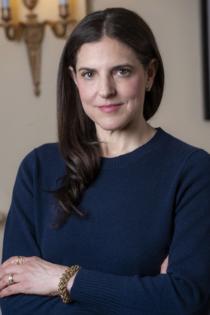
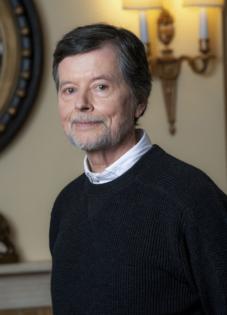
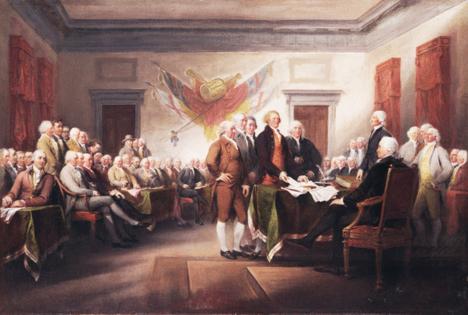






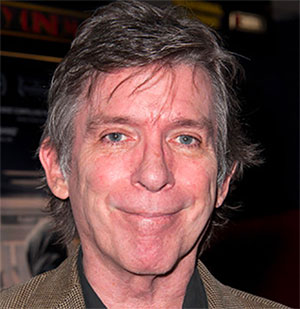
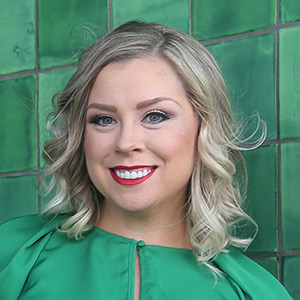


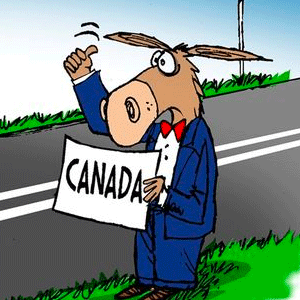

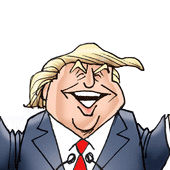
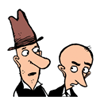

Comments